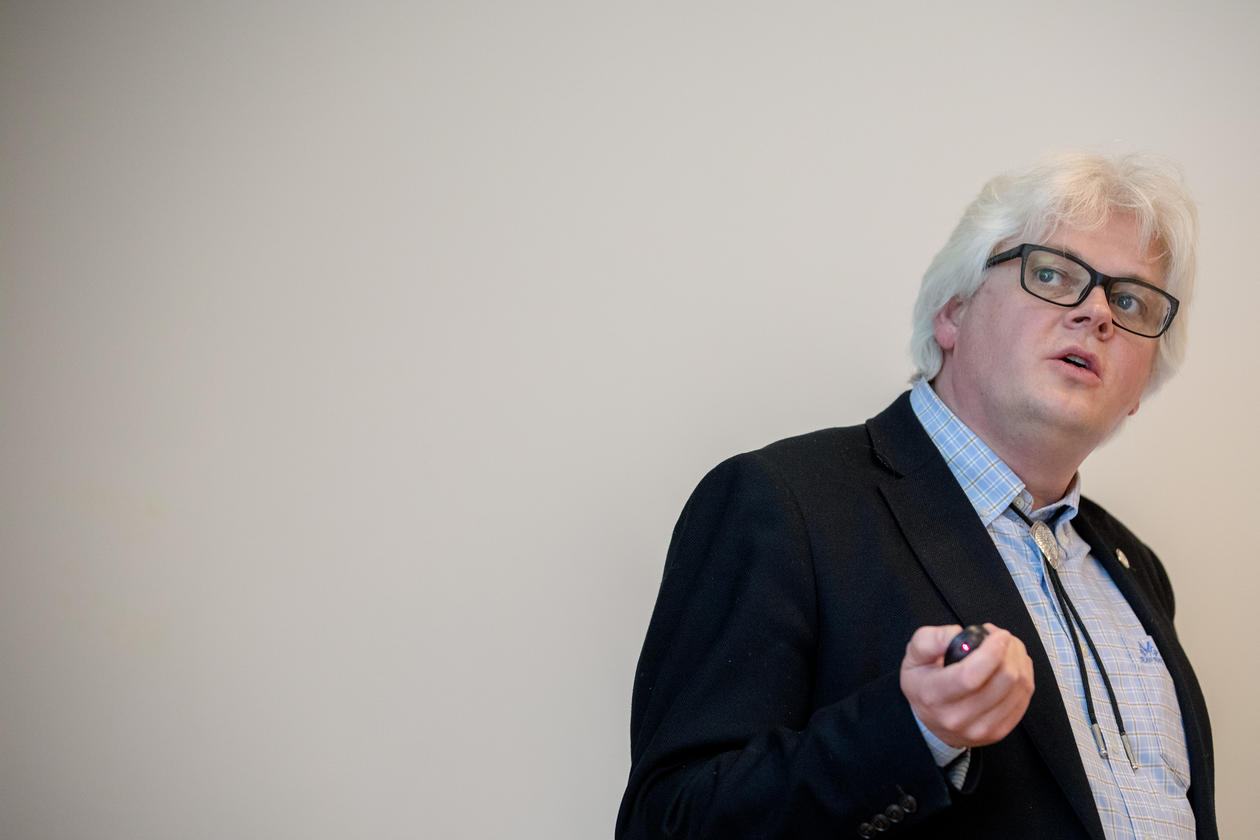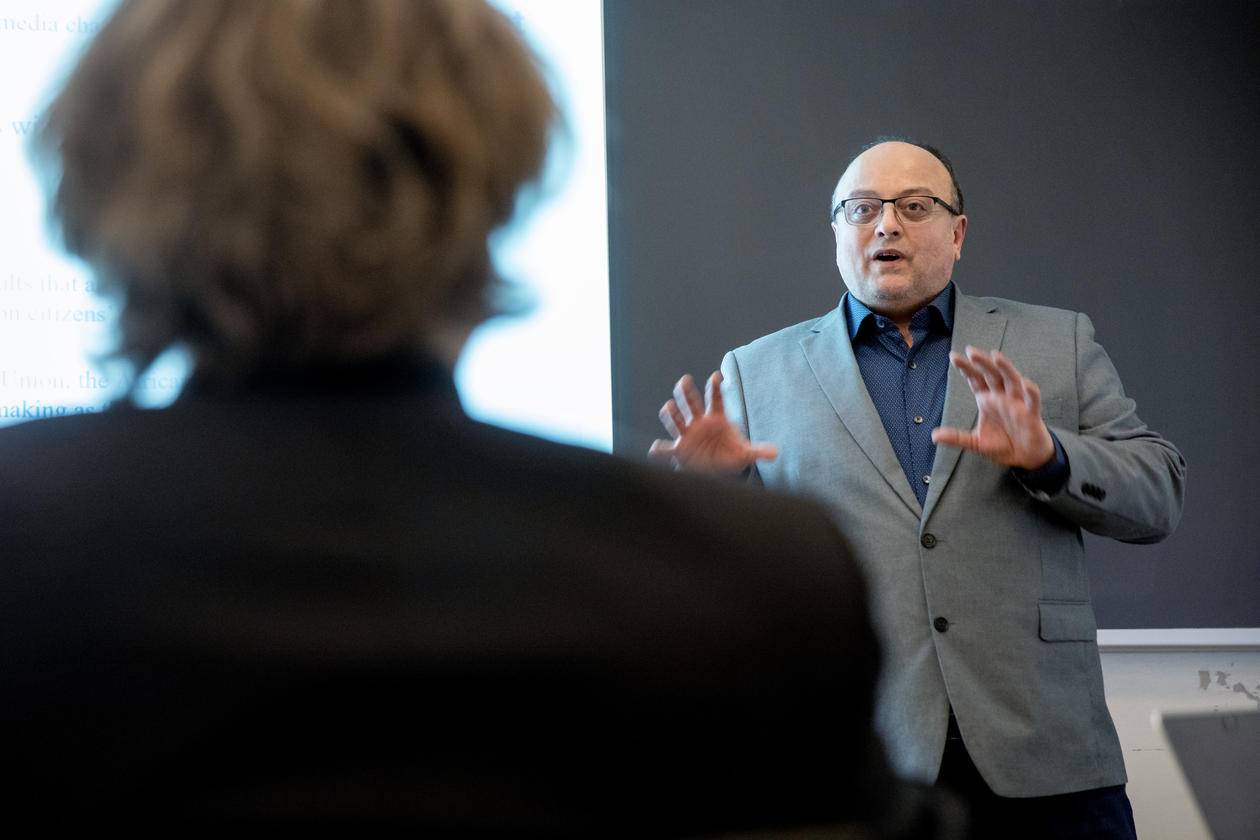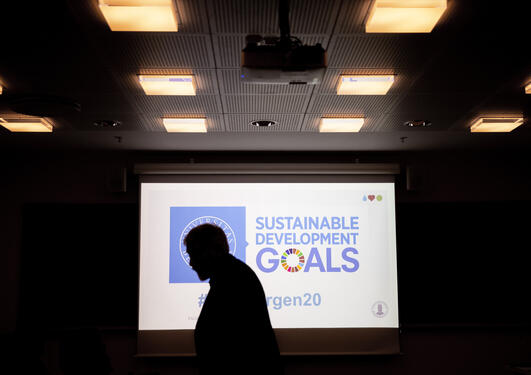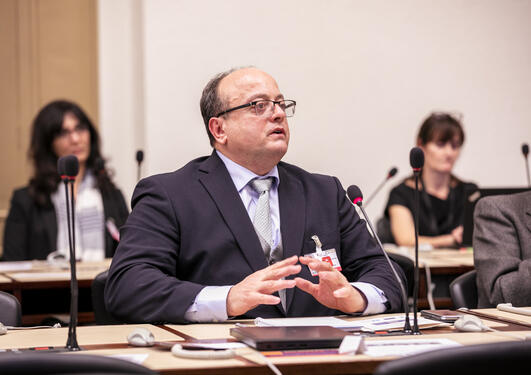The future of science diplomacy
In a special workshop during the SDG Conference Bergen a group of leading international researchers presented their visions for improving science advice to decision-makers.

Main content
No less than three Horizon 2020 projects were presented as part of the workshop Science Diplomacy in the Age of the SDGs on 5 February 2020 during the SDG Conference Bergen. The SDG Bergen Science Advice workshop gathered 40 researchers from the University of Bergen to learn more on how to provide science advice to decision-makers, and to learn from researchers with a track record in the science-policy nexus.
Making the case for mobility
How to create a shared science diplomacy for Europe, was the starting point for Rasmus Gjedssø Bertelsen’s opening presentation. He is Barents Chair at the Arctic University of Norway and represented the Horizon 2020 project InSsciDE. In his presentation he underlined the value of mobility.
“How do very different institutions and very different societies deal with science and policy. As a Scandinavian it's very important to get out of Scandinavia. Other societies have very different experiences in the science-policy nexus,” he said, “great powers think very differently. Important for us to get out of the small-state mindset. How does a superpower think?”
For him the work on science diplomacy produces a lot of fundamental research, both theory and strategy. A good science diplomat needs both ‘strategic’ and ‘tactical’ mobility.
“There is ‘strategic’ mobility, such as education, research, languages. How to be able to contribute very precisely to the specific challenge in the call text for science advice,” he said, “and then there is ‘tactical’ mobility, which is about being in the right place at the right time. I use science diplomacy to reach goals. I see it as my job to contribute to underpin this.”
How to become a science diplomat
In his presentation From cancer genetics to science diplomacy to Horizon 2020, Lorenzo Melchor from the Spanish Foundation for Science and Technology (FECYT) and the Horizon 2020 project S4D4C took the participants on a journey from how he switched a career in science to science diplomacy, with examples of what the S4D4C project is working on.
He engaged the audience by clearly defining the role of the science diplomat, including advice on how to be effective in this role. (SEE FACTS.) Along with Switzerland, Spain has been on the forefront when it comes to science diplomacy, including the innovative scientist-diplomats pairing scheme Ambassadors for Science, launched in London, and the organization of the Open Doors programme, a training scheme developed by S4D4C across several European countries. Altogether findings from S4D4C and from the Spanish experience in science diplomacy are feeding the EU Commission and other central bodies of European cooperation with best practices and empirical evidence.
“Through S4D4C we have established the Madrid Declaration on Science Diplomacy. This lists the benefits and principles that must govern science diplomacy approaches for nations. Recognise not only as national, not only nation states, but other stakeholders. Science, industry, government, civil society, etc,” said the Spanish science diplomat.
S4D4C centres around nine empirical case studies built on three research pillars: foreign-policy driven (diplomacy challenges), science driven (science opportunities) and instrument driven (coordination options). The project has identified three main challenges for science diplomacy in the EU: defining science diplomacy as a variable but succinct framework, coordination between member states and the EU, and training of staff engaging in science diplomacy.
“How is science engaging with social issues,” asked Melchor pointing to the open science policy discourse and innovative approaches to this, “instead of talking about this from a science or diplomatic perspective, we have a project with joint programming, i.e. instrument driven, as a science advice mechanism.”
A report for quality science advice
In the third presentation, the University of Bergen’s Jeroen van der Sluijs presented the report Making Sense of science for policy under conditions of complexity and uncertainty (MASOS), which presents policy-makers with a framework for quality science advice to inform their decisions.
“Science advice is always affected by values, conventions and preferences. This is one of the main takeaways from the report,” said Jeroen van der Sluijs in his presentation, “and we need integration of different types of knowledge in the policy process.”
He also gave a note of caution and encouraged action from the scientific community.
“There may be supply and not demand for science advice. We need to put this on the agenda,” said van der Sluijs about how researchers need to take an active stand to bring their knowledge to decision-makers and also underlined the need for interdisciplinarity for science to be heard.
Migration project for better policies
The final presentation was by political scientist Hakan G. Sicakkan from the University of Bergen, whose Horizon 2020-supported migration and refugee project PROTECT officially launches in Brussels in March 2020. In December Sicakkan was invited to the first Global Refugee Forum in Geneva by the UN High Commissioner for Refugees, where he became a member of a global expert group relating to the UN’s Global Compact for Refugees.
In his presentation Sicakkan described the journey from his previous EU-supported projects – GLOCALMIG (2002-2004) and EUROSPHERE (2007-2013) – to PROTECT (2020-2023), and what he had learned from providing science advice to decision-makers previously and how this will inform his approach with his new project.
“In my first EU project GLOCALMIG we proposed three alternative policy solutions: change citizens subjective belongs to increase their well-being, change citizens mobility patterns, and facilitate participation in multiple public spaces,” he told the audience.
“Whereas my second EU project EUROSPHERE was seeking ways of making a transnational political public space and political communication possible in the EU.”
His new project PROTECT is the first international project on how the UN’s Global Refugee Compact and Global Migration Compact may affect refugees’ right to international protection.
“Governments have a high-level awareness of scientific research results that are relevant for their policymaking. However, their policy choices have to depend more on citizens’ perceptions and preferences than on what comes out of research,” said Sicakkan.
“There is always an element of contingency concerning consequences of science communication. Often unexpected consequences as to which findings might be perceived as policy relevant, for which policy, by whom and when.”
Closing on a contingency
Scientific Director Edvard Hviding from SDG Bergen Science Advice closed the workshop by thanking the four main speakers and also delighted in the positive response to the presentation of the SDG Bergen Policy Briefs, which will launch in spring 2020.
“To pick up on the element of contingency. Indeed, we never know when they will have use for us,” said Hviding bringing home the lesson that sometimes randomness is the decisive factor to underpin the quiet work of the science diplomat.






